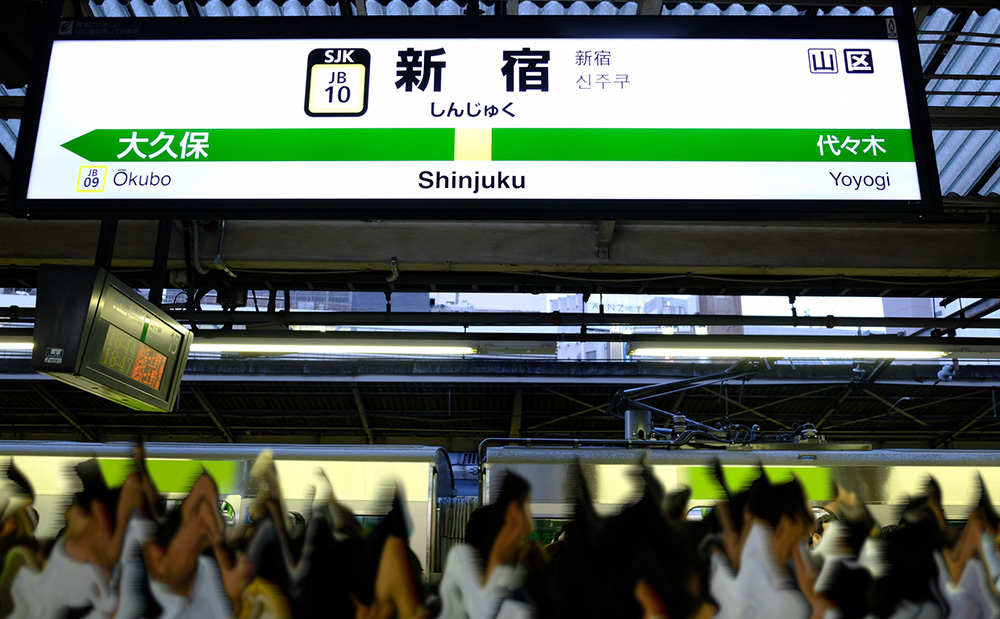Updated January 8, 2025
Recently, I saw a Japanese TV show that ranked the busiest train stations around the world. I was surprised to see that the train stations in Japan won 23 out of the top 25 spots.
The other two in the top 25 were the Paris Nord Train Station from France and the Taipei Station from Taiwan. Japan also collected an astonishing total of 45 places out of the top 51!
~~~~~~~~~~~~~~~~~~~~~
The top three busiest train stations in Tokyo rank as follows:
Shinjuku Station: 12,081,050,000 people (1.2 billion)
Shibuya Station: 11,031,980,000 people (1 billion)
Ikebukuro Station: 925,970,000 people (0.9 billion)

Shinjuku Station
I am not exaggerating when I say that the number of people who use Shinjuku Station is as many as the population of China. Each area within Shinjuku has its own quirks and attractions that entice people to visit. If you go to the West side of Shinjuku, you'll see a large mass of office workers hustling to get to their offices on time. You may also stumble across some famous tourist sites such as the Shinjuku Gyoen National Garden, the Tokyo Metropolitan Government building, or one of the many large department stores. The East Exit of Shinjuku Station will take you to the vibrant nightlife area of Kabukicho. People drink here with colleagues and friends until the following morning, or just stay overnight in a Karaoke room!
Many different rail company lines go through this station, and the bus terminal is located very nearby. Shinjuku Station has made the Guinness World Record for the world's busiest station.
It is almost impossible not to bump into someone once you enter the station!
I was scared when I first started working in Shinjuku - you even have to be mindful not to leave the station through the wrong exit!
Though I have now become accustomed to the station, it is still difficult for me to give directions to people looking to navigate their way through it. Given that it is so challenging for locals to navigate through the station, I cannot imagine how difficult it might be for foreigners!
Rankings from 4th to 15th
4. Umeda Station (Osaka)
5. Yokohama Station (Kanagawa)
6. Kitasenju (Tokyo)
7. Nagoya Station (Aichi)
8. Tokyo Station (Tokyo)
9. Shinawaga Station (Tokyo)
10. Takadanobaba Station (Tokyo)
11. Namba Station (Osaka)
12. Shinbashi Station (Tokyo)
13. Tennoji Station (Osaka)
14. Akihabara Station (Tokyo)
15. Kyoto Station (Kyoto)
It does not surprise me that Umeda Station located in the center of Osaka ranks the fourth and the fifth goes to Yokohama station, the tourist center of Kanagawa. But I was taken aback by the sixth, Kitasenju Station.
It's hard to believe that there are more passengers at Kitasenju Station than there are at Japan's main tourist destination (Kyoto), central parts of Tokyo (such as Tokyo Station or Shinagawa Station), and Paris, France!

Kitasenju Station
Kitasenju Station is far away from downtown and it’s not one of the Yamanote Line stations. I would say that the station itself is not very attractive either. So why is it so busy?
It is because this station connects with MANY lines, and many people from Tokyo, Chiba Prefecture, Saitama Prefecture, Tochigi Prefecture, and Gunma Prefecture use this station to change lines on their way to work.
I found a survey that stated more than half the workers in Tokyo spend over an hour getting to work. I wonder how that compares to commuters in other parts of the world?
Rush hour in Tokyo, (7:30 am to 9:30 am), and around the time the last train leaves, (11:00 pm~), are supposedly the busiest station times.

I recommend that visitors to Japan try to avoid these rush hour times as much as possible!
One time in an incredibly crowded train I saw a man with his guide dog. Even though the dog was being stepped on and kicked by the other passengers, it stood unwaveringly by its master's side. The sight almost made me cry.
Accidents and schedule delays cause the platform to become particularly dangerous as it becomes flooded with people. When a train finally does come, it is often so crowded that only 2-3 people are able to squeeze themselves on.
You should be particularly careful if you have small children or large pieces of luggage with you.
Although Tokyo’s train system is convenient, you do have to plan your routes and times carefully!
